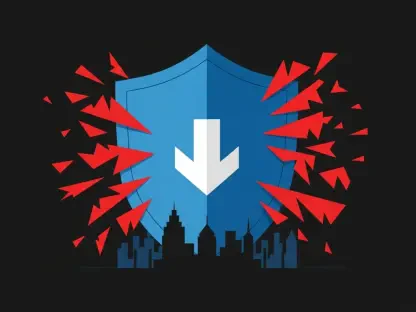Introduction
In a startling turn of events, renewable energy investments have plummeted by a staggering $20.5 billion, representing a 36% decline in just the first half of this year, as reported by BloombergNEF. This dramatic downturn underscores the profound influence of recent policy shifts on an industry pivotal to combating climate change and ensuring energy security. With global temperatures rising and energy demands soaring, the role of renewables has never been more critical, making the impact of governmental decisions a pressing concern for stakeholders across multiple sectors. This analysis delves into the intricate web of challenges spurred by policy changes, examines the economic and insurance industry repercussions, incorporates expert viewpoints, forecasts potential future trajectories, and distills essential insights for navigating this turbulent landscape.
The Policy Landscape: Dissecting Impacts on Renewables
Economic Fallout and Declining Investments
- The renewable energy sector is reeling from a significant financial blow, with investments dropping sharply by $20.5 billion in the first half of this year, a 36% decline according to BloombergNEF data. This downturn is a direct consequence of sweeping policy changes that have reshaped the economic foundation of the industry. The urgency to understand these shifts is paramount as they threaten the momentum of green energy adoption.
- Specific measures, such as the rollback of the EPA’s $7-billion Solar for All program, the elimination of crucial tax credits, and the imposition of tariffs on solar components, have directly undermined funding streams. These actions have not only deterred investors but also stalled project pipelines, creating a chilling effect on new initiatives. The viability of many planned developments now hangs in the balance.
- Beyond immediate funding issues, the broader economic strain is evident among manufacturers, developers, and consumers who grapple with escalating costs. Without incentives to offset expenses, the affordability of renewable technologies diminishes, slowing market growth. This cascading impact highlights how policy can ripple through every level of the supply chain, burdening all participants.
Real-World Consequences: Project Cancellations and Job Losses
- Tangible outcomes of these policy shifts manifest in the cancellation or delay of clean-energy projects worth over $22 billion since the start of this year. This figure represents a significant setback for an industry poised for expansion, with numerous initiatives now shelved. Such disruptions paint a grim picture of the immediate human and economic toll.
- The human cost is equally stark, with over 16,000 jobs lost in the sector during the same period. Specific actions like rescinded permits for wind and solar installations, halted offshore leasing agreements, and the dismantling of community energy programs have amplified the damage. Entire regions dependent on these projects now face economic uncertainty.
- In certain areas, the impact is particularly acute, as seen in states where major solar farms have been delayed due to policy reversals. These regional setbacks serve as stark reminders of how national decisions can disrupt local economies, displacing workers and stalling community development. The stories of affected areas bring a human face to the cold statistics of loss.
Ripple Effects on the Insurance Industry
Challenges in Underwriting Residential Solar Projects
- The insurance sector is not immune to the turmoil in renewables, particularly with softening demand for residential solar installations. Tariffs, inflation, and state-level policy adjustments, such as California’s net energy metering changes, have dampened consumer enthusiasm. This decline in interest poses unique challenges for insurers tasked with covering these projects.
- Risk aversion is growing among insurance carriers, with only a limited number willing to underwrite single-family home solar projects. Technical risks, such as installations on pitched roofs, coupled with higher claim costs, have made insurers cautious. This hesitancy restricts coverage options for homeowners eager to adopt sustainable energy solutions.
- Brokers face a competitive bottleneck as they scramble to secure coverage for clients amidst cautious underwriting practices. The shrinking pool of willing carriers intensifies the struggle to place policies, often leaving projects uninsured or underinsured. This trend signals a tightening market that could further deter residential solar adoption.
Pricing Pressures and Market Uncertainty
- Despite current stability in insurance pricing for renewable projects, industry experts caution that premium increases are looming on the horizon. This potential shift could add another layer of financial strain to developers already navigating a hostile policy environment. The anticipation of higher costs looms large over budget planning.
- Policy-induced market volatility, compounded by economic pressures like inflation, exacerbates uncertainty for insurers and brokers. The unpredictability of future regulations makes long-term risk assessment challenging, often leading to conservative coverage offerings. This climate of doubt hinders strategic decision-making within the sector.
- Reduced coverage options and the specter of cost hikes place additional burdens on an industry already grappling with declining investments. Developers and contractors must now factor in potential insurance expenses alongside tariffs and subsidy losses, further squeezing profit margins. The compounded financial pressures threaten to stall progress even more.
Expert Insights: Navigating a Hostile Policy Environment
- Industry leaders offer sobering perspectives on the current challenges, with Canaan Crouch, executive vice president at Jencap Specialty Insurance Services, highlighting the difficulties in placing coverage for solar projects. The complexities of securing policies amidst policy rollbacks are a growing concern for brokers. Expert voices provide critical clarity on navigating these obstacles.
- Beyond immediate insurance hurdles, experts point to systemic disruptions caused by policy reversals, noting cascading effects on investment and consumer demand. The interconnected nature of these impacts means that setbacks in one area, like funding, inevitably affect others, such as market confidence. This holistic view underscores the depth of the crisis.
- Despite short-term setbacks, there is a consensus on the enduring relevance of solar energy as a local, efficient energy source. Specialists argue that while current policies hinder growth, the fundamental need for sustainable power will sustain the sector over time. This long-term optimism offers a counterbalance to present difficulties.
Future Outlook: Balancing Setbacks with Potential Recovery
- Looking ahead, the trajectory of renewable energy under continued policy hostility appears bleak, with potential for further declines in investment and project development. If current trends persist, the sector could face even deeper cuts in funding, stunting innovation and expansion. This possibility demands proactive monitoring by stakeholders.
- Emerging challenges, such as tightening insurance capacity and anticipated premium increases, are likely to complicate matters for developers and consumers. These pressures could raise the cost of entry for new projects, discouraging smaller players from participating. The financial barriers to adoption may grow more formidable in the near term.
- On a more hopeful note, the sustained importance of solar for localized energy needs offers a glimmer of potential recovery. Market adaptations or future policy reversals could reinvigorate the sector, while broader economic and energy sector implications suggest resilience over time. Balancing these short-term adversities against long-term prospects remains key to strategic planning.
Conclusion: Key Takeaways and Call to Action
Reflecting on the challenges faced, the economic fallout from policy shifts has cast a long shadow over the renewable energy sector, with declining investments and consumer demand marking significant hurdles. The insurance industry, too, struggles with underwriting challenges and looming pricing pressures, as expert insights paint a picture of both immediate setbacks and enduring potential. Moving forward, stakeholders must prioritize staying abreast of policy developments, advocating for supportive legislative frameworks, and preparing for evolving risks. Embracing innovative risk management strategies and fostering collaboration across sectors could pave the way for resilience. As the landscape continues to shift, a proactive stance in monitoring and adapting to these changes will be essential for safeguarding the future of sustainable energy.









